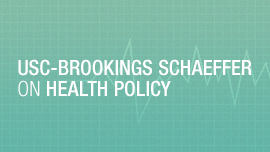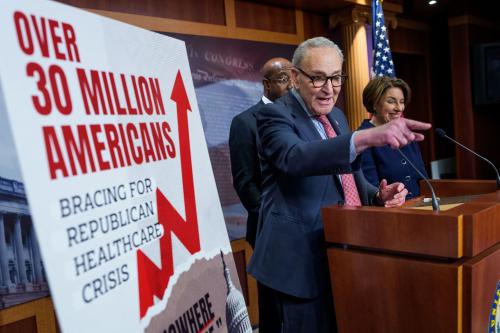The Supreme Court’s June 25 decision on the Affordable Care Act (ACA) has settled the fate of the legislation – at least until the next election and likely beyond. It is difficult to imagine a political scenario unfolding during the next few years in which a repeal bill is passed by Congress and signed into law. Moreover, as Americans become accustomed to the ACA despite their dislike of parts of it, and doctors and hospitals invest heavily in adapting to the law, it will become increasingly harder for Republicans to enact legislation to replace the ACA with something entirely different.
So Republicans have two alternatives after this ruling. They can choose to adopt “repeal” as simply an election battle cry for 2016, using the ACA as a “messaging” issue much as they did with the Clinton health plan after its collapse in 1994. Or they can engage in a more focused and deliberate strategy to change the direction of an established program, as they did successfully in accomplishing welfare reform in 1996. If Republicans choose the first alternative there may be some short-term election gains – although that is far from clear – but they will probably lose the long-term health reform war. The features of the ACA they so dislike would likely become entrenched. But if they choose the second alternative, and focus on the redesign of core elements of the law that could win bipartisan support, they could well change the structure and evolution of the ACA.
There are three potential reforms of the ACA that could “fix” the law while crucially changing its direction.
An “Off Ramp” for States. The near-death experience of King v. Burwell led many in both parties, together with Administration officials and governors, to envision a future in which subsidies continued to flow to states with federal exchanges but with states allowed to use them in a wide variety of ways to increase coverage. Many of the leading Republican “King” bills centered on maintaining federal insurance subsidies while giving states major new options to organize coverage. Meanwhile, lawmakers and analysts rediscovered Section 1332. This widely overlooked provision of the ACA allows states, starting in 2017, to request waivers that could include sweeping changes in the ACA. This ACA provision explicitly allows these waivers to include such things as an end to the individual and employer mandates, a fundamental redesign of the subsidy system, and a substantial modification of the benefits package.
Even with no change in the law, Republican governors – especially if there is a Republican in the White House in 2017 – could use Section 1332 to achieve the broad goals of the ACA in quite different ways. With some legislated modifications to the Section, both liberal and conservative states could adopt bold approaches to escape clumsy and bureaucratic features of the ACA while achieving the goal of affordable coverage.
Alternatives to Medicaid. Republicans in Congress and many state houses have strongly resisted expanding Medicaid, and the ACA’s attempt to require states to do so was struck down in 2012 by the Supreme Court. But the Administration has since been open to granting waivers for states to use ACA money originally intended for a traditional Medicaid expansion to enroll individuals instead in exchange plans or other forms of private coverage.
If Republicans focus on structural reform of the ACA rather than a repeal-only strategy, they have an opportunity to covert at least the Medicaid expansion provisions of the ACA, and potentially much of Medicaid and the Children’s Health Insurance Program (CHIP), into direct subsidies for private coverage.
Tax Reform and Health Care. Health economists across the political spectrum have for decades argued for reform of the tax treatment of health insurance, especially the tax exclusion of employer sponsored insurance. The exclusion, which makes compensation earmarked for health insurance tax free, is very regressive and discourages employees from questioning the cost of their often “free” workplace coverage.
There has long been broad support for capping or ending the tax exclusion and replacing it with refundable tax credits or some other form of income-related subsidy. The ACA tackled this issue but not with a well-designed reform of the tax exclusion. Instead it imposed a “Cadillac Tax” on higher-cost plans starting in 2018, yet left the underlying regressive tax exclusion in place. While some employers are planning to avoid the tax by adjusting the cost of their plans, there is a growing campaign to repeal the unpopular tax.
This will be a test case for Republicans. Those focused only on short-term politics will line up with calls simply to eliminate the Cadillac Tax. Those committed to an overhaul of the tax system as well as achieving an efficient health system will seek to modify the Cadillac Tax” as a first step towards replacing the exclusion with tax credits for coverage.
My colleague Henry Aaron writes that the ACA is here to stay, yet needs changes, and that the decision by the Supreme Court will hasten the day when the two parties sit down to address the need for fixes to the statute. I believe he is right, and the quicker that day occurs the greater the chances for Republicans to reshape the law.
The Brookings Institution is committed to quality, independence, and impact.
We are supported by a diverse array of funders. In line with our values and policies, each Brookings publication represents the sole views of its author(s).




Commentary
King v. Burwell: Two roads for Republicans
June 26, 2015